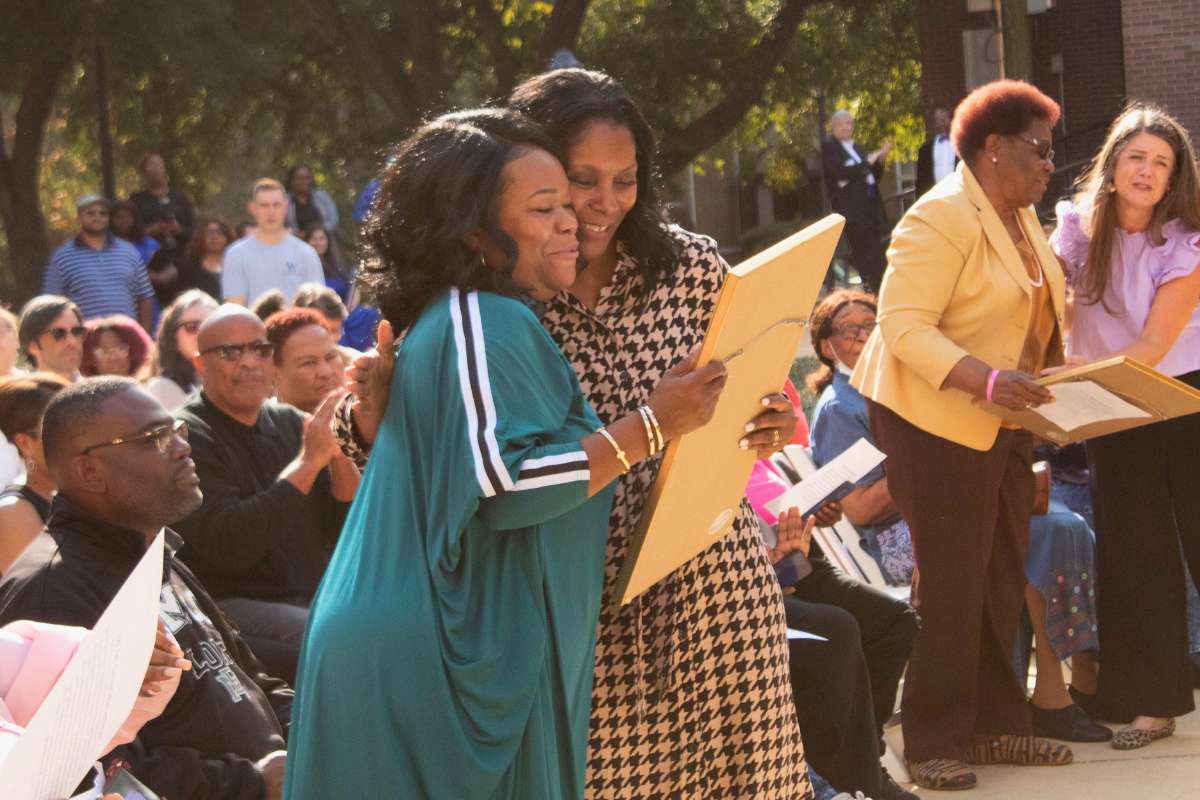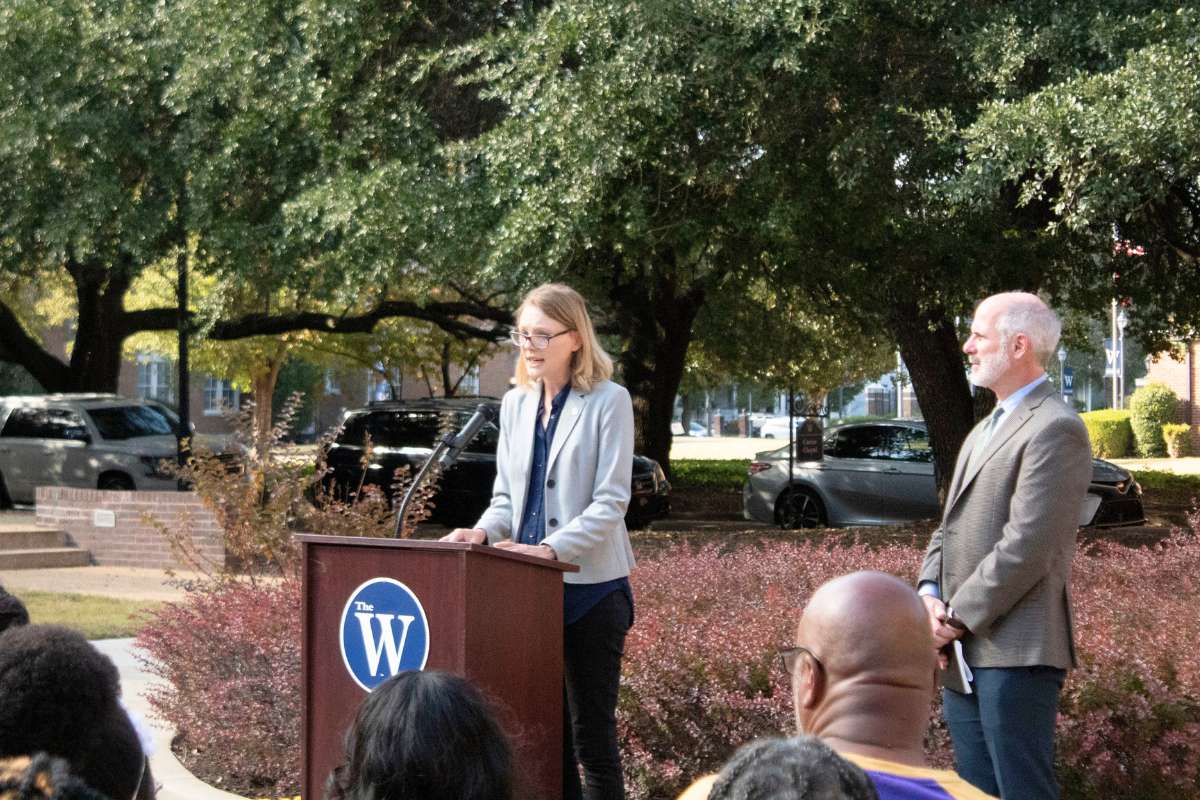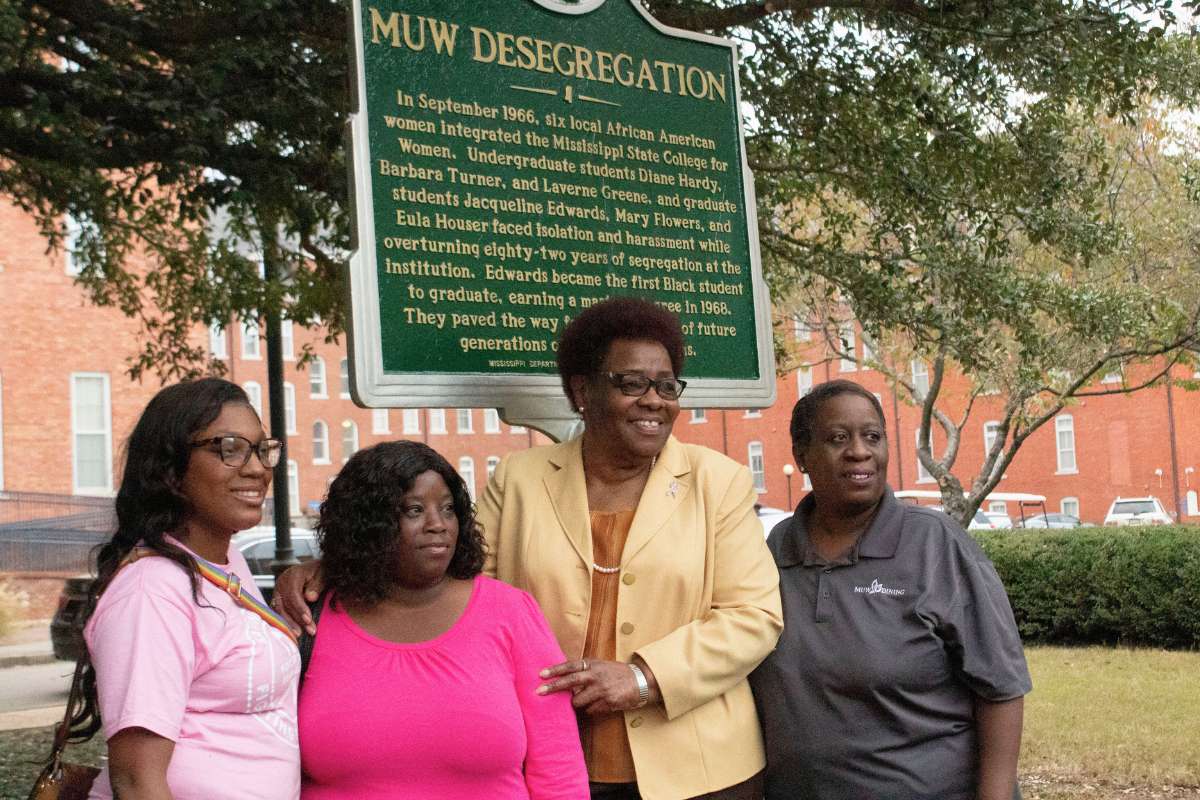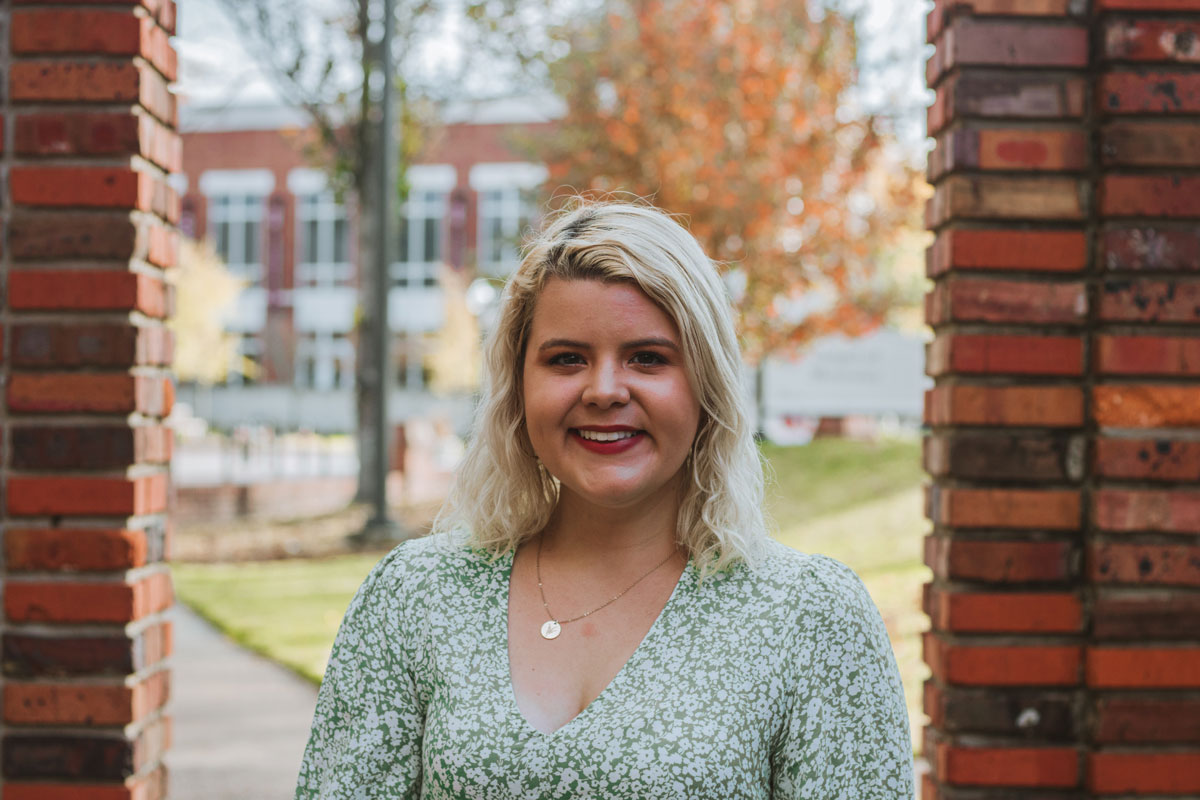COLUMBUS, Miss.— Laverne Greene smiled as students unveiled a new historic marker at the Mississippi University for Women that honors her for being among the first six Black women to integrate into the university in 1966, then known as the Mississippi State College for Women.
The Columbus, Miss., native said she was “surprised and delighted” when Mississippi School for Mathematics and Science teacher Chuck Yarborough told her she would be named in a historic marker on MUW’s campus along with Diane Hardy, Barbara Turner, Jacqueline Edwards, Mary Flowers and Eula Houser.
Greene said she, Turner and Hardy were all freshmen in September 1966 and knew each other, but did not know graduate students Edwards, Flowers and Houser.
“But the three freshmen, we were just wanting to go to school. We didn’t even think of an impact,” Greene told the Mississippi Free Press on Oct. 18. She majored in social studies.
The women endured scrutiny as they ended 82 years of segregation at MUW.
“Being 17 years old at a whole new place, new people and everything, it was different, yes. But since then, … as I look at it there’s such a diversity of men and Black students (at the university) that I feel elated,” Greene said. MUW became coeducational in 1982.
‘It Was a Long Time Coming’
Karen Edwards, the daughter of the late Diane Hardy, was at the unveiling ceremony Thursday to represent her mother’s legacy.
“It was a long time coming. She was very quiet and low-key, but I know that this would mean a whole lot. I know she’s smiling down from heaven,” Edwards told the Mississippi Free Press on Oct. 19.

Edwards and Hardy were in college at the same time—Edwards at Mississippi State University and Hardy at MUW. Hardy returned to MUW to finish her degree in education through her daughter’s encouragement.
“We ended up graduating at the same time basically,” Edwards said.
Hardy went on to teach at West Lowndes School until her death.
Tell Their Stories
For decades, the Mississippi University for Women’s campus did not tell the stories of the women who integrated it. Now, 57 years later, the university is finally dedicating a historic marker to honor their boldness.
“Their stories, their experiences were not known on campus. Nothing on campus told us even their names—no mural, no buildings,” Erin Kempker, a history professor at MUW, said at the marker dedication ceremony on campus on Oct. 19.
In 2012, MUW students started researching the six Black women and their integration into the university, and the more they learned, the more they wanted to share the women’s stories, she said. The students’ interview with Diane Hardy inspired them to create art and informational projects to educate people about the desegregation of MUW. Art history students crafted work inspired by these stories for the “In Their Footsteps” display.
“What is at the heart of all these projects is students and students’ deep appreciation of the Black women who did the work of desegregation,” Kempker said.
Chuck Yarborough looked at the over 1,000 historic markers across the state and noticed that few memorialized women and even fewer honored Black people.

In 2021, he read MUW’s historic marker on campus that tells of the school’s founding as the first state-supported college for women and noted that the sign does not name any women.
“I thought about how no woman was actually named on that marker, and I considered how I could only think of one other woman named on the plethora of markers in Lowndes County,” the teacher said at the ceremony on Oct. 19.
Then, Yarborough discovered that only four of Lowndes County’s 35 state historic markers named women and just six named Black people, “despite the fact that African Americans have been a majority of our community’s population for most of its history,” he said.
Inspired to educate residents about the complete history of Lowndes County, the teacher created MoreStory Monuments as part of his teaching curriculum to educate his students about “people, places and events that aren’t included in the landscape of our local history.” Through this project, his students proposed ideas for new historic state markers. One of the groups of students used Kempker’s students’ research about the first Black women to integrate into MUW to suggest a historic marker dedicated to them.
Yarborough said another MSMS student group researched the three founding mothers of MUW, who will be honored in a historic marker on campus in March 2024.
“I want our students to be completely empowered in their communities, wherever they end up, so I want them to be able to look at a community with a discerning eye that recognizes there may be more to the story than what they see outside of buildings or on historic markers,” he told the Mississippi Free Press on Oct. 19.






